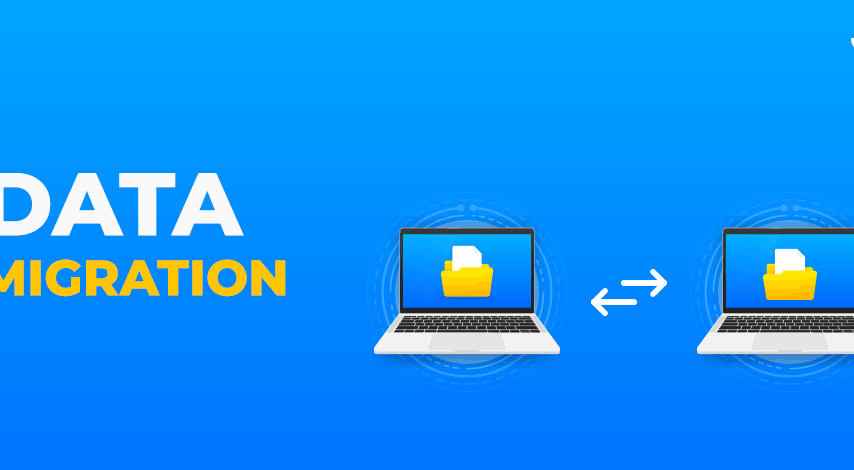Business data migration represents an actual challenge when companies conduct database upgrades, implement cloud services, and consolidate systems. Every migration process follows the exact same objective: ensuring error-free data movement from one location to another. Maintaining data accuracy and security throughout migration procedures proves to be a major challenge for organizations. We designate this process as data integrity.
The piece analyzes key data integrity aspects in migration and then provides five essential security steps for maintaining valuable information.
The Importance of Database Migration in Today’s Evolving World
Modern businesses continuously strive to lead technological transformation in a rapidly changing industry. The modernization process usually requires businesses to update their IT infrastructure through various measures, including database optimization, cloud platform implementation, and software system integration. Database migration plays a vital role in present-day modernization projects.
Along with this process, businesses face substantial difficulties. Moving extensive volumes of critical business data poses complex risks because it contains sensitive information. Data integrity starts without priority status before becoming essential during migration to ensure its success.
The reliability and accuracy of data at every stage of your migration will remain preserved when you maintain data integrity. Proceeding with this measure helps reduce disruptions that affect business operations. Bad data quality leads organizations toward poor decisions, waste, and damaged trust with customers and stakeholders.
Migrating databases is a strategic business decision because it determines the direction of your organization. The absence of proper data migration planning increases the business’s financial danger and creates challenges with regulatory compliance.
Moving Your Data: What is Data Migration?
Data migration entails the essential task of relocating data between specific locations. The process includes three possibilities: transferring server-based data to cloud storage, updating your database system, or creating unified data platforms from different systems.
Moving your data results in various major benefits but introduces specific challenges that need consideration. The top challenge during data migration involves protecting the accuracy and security of information from the point of transfer to completion.
Transferring data inevitably involves risks at some point during the process. During data transfer operations, system compatibility issues may appear, and data-related errors can affect the process. Exchanging data between different environmental systems requires absolute focus on security measures to defend sensitive information.
What is Data Integrity?
Imagine you’re moving house. Your main priority is keeping your entire moving cargo intact until it reaches your new residence. Data integrity is the fundamental principle of protecting data throughout its movement. Complete data migration requires constant maintenance of data accuracy combined with dependability and trustworthy authenticity.
Every piece of original data must reach its target location without experiencing any alterations, deterioration, or corruption during the movement process. The mess up of data results in severe complications. When your data remains inaccurate, it will lead to poor decisions with monetary calculations in disarray while business trust suffers from your customers. When sensitive data ends in unintended hands, it results in critical security violations, which might create legal complications.
When it comes to data integrity, the core meaning consists of removing any unauthorized modifications or losses and keeping the data in its uncorrupted form. Every business owner must protect sensitive data through authorization protocols to prevent cases of unauthorized entry from either human error or cyber theft.
Data readability must be ensured for specific situations, particularly when transferring or handling data in a new system. Users must be able to read and utilize their data efficiently throughout their new system location.
The Importance of Data Integrity in Database Migrations
Database migrations are a key part of any company’s journey to modernize its technology. As businesses move away from outdated and slow database systems to faster, more modern solutions, protecting the integrity of their data becomes paramount.
Why is this so crucial? Imagine moving your company’s database, which contains vital customer information. If something goes wrong during this move and your data gets corrupted, the consequences could be disastrous. You could lose valuable data, and your company’s reputation could suffer severe damage.
When data integrity isn’t correctly maintained, it can lead to some serious problems:
- Business Interruptions: Corrupted data can bring your business to a screeching halt, disrupting workflows and leading to costly downtime and lost revenue.
- Poor Decision-Making: If key business metrics are based on inaccurate data, executives may make poor decisions that could harm the company’s bottom line.
- Regulatory Compliance Issues: Many industries, such as healthcare and banking, are heavily regulated. If these businesses mishandle sensitive data, they could face fines for violating regulations.
These are just a few reasons why maintaining data integrity and prioritizing security measures during database migrations is essential.
Keeping Your Data Safe During a Migration: 5 Essential Tips
Moving every house item simultaneously equals migration of complete data simultaneously, which is avoidable. Five essential steps exist to protect your data integrity during data migration operations.
Begin by studying your data in detail before starting any process. Are there any duplicates? Missing pieces? Inconsistent information? Discovering these problems in advance will protect you from significant complications during subsequent steps.
Sending your data to a safe location becomes vital, just like moving house insurance; thus, maintain a backup strategy always. Your backup system functions as protection against any migration issues that may develop. Creating recovery procedures forms an important part of your strategic plan. You should establish a system that lets you return to your original data when problems occur.
Your data accuracy needs double verification throughout all stages of migration, beginning before the process and continuing until after completion. Slowly go through your data to check whether it matches up with your original information. Data type validation procedures enable you to recognize mistakes during earlier stages of the process.
An Approach of Small Steps Proves More Beneficial Than Migrating Your Entire Data Assembly in One Migration. Partitioning your data into smaller parts enables better manageable processes and a reduced likelihood of extensive mistakes. You obtain additional time to detect and resolve problems, which will prevent them from impacting your full dataset.
Data Integrity vs. Data Security: Understanding the Key Differences
Although data security and data integrity share similar meanings, they represent separate concepts.
A fortress stands as a barrier that defends your data against unauthorized entrance. The goal of data security is to protect your data from unauthorized activities, data corruption, and data loss. Standards of data security function like defensive barriers that protect against unauthorized entities.
The main goal of data integrity is to maintain data consistency that results in delivering precise and dependable information. The careful check maintains data excellence at all times.
Data security is an essential base requirement for maintaining data integrity. Your data security status determines its level of vulnerability to breaches, which can easily neutralize its accuracy and reliability. Successful data migration depends on the joint requirement of data integrity and security.
Conclusion
Performing data migration involves tasks that surpass fundamental data relocation. Executing data migration requires proper planning to maintain accurate data security and integrity from start to finish.








